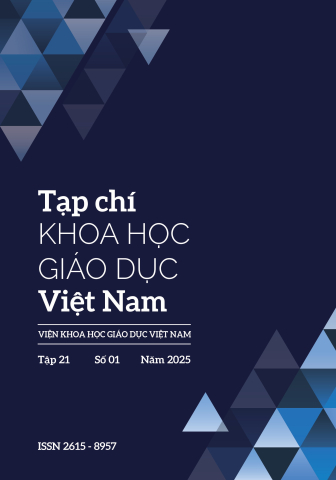[1] Ainscow, M, (2015), Towards self-improving school systems: Lessons from a city challenge, London: Routledge.
[2] Alhaznawi, A. A., & Alanazi, A. S, (2021), Higher education faculty staff members’ attitudes toward students’ inclusion with high incidence disabilities in Saudi Arabia, World Journal of Education, 11(1), 51. https://doi.org/10.5430/wje.v11n1p51
[3] Beaton, M. C., Thomson, S., Cornelius, S., Lofthouse, R., Kools, Q., & Huber, S, (2021), Conceptualising teacher education for inclusion: Lessons for the professional learning of educators from transnational and crosssector perspectives, Sustainability, 13(4), p.1– 17, https://doi.org/10.3390/su13042167.
[4] Braun, V., & Clarke, V, (2006), Using thematic analysis in psychology, Qualitative Research in Psychology, 3(2), p.77-101, https://doi.org/10.1191/1478088706qp063oa
[5] Cerna, L., et al, (2021), Promoting inclusive education for diverse societies: A conceptual framework, In OECD education working papers, Vol. 260, https://doi. org/10.1787/94ab68c6-en.
[6] Arvanitakis, J, (2014), Massification and the large lecture theatre: From panic to excitement, Higher Education, 67, p.735-745, https://doi.org/10.1007/ s10734-013-9676-y.
[7] Badrkhani, P, (2019), Iranian university faculties and managing culturally diverse classrooms: Strategies for peace establishment in the higher education, Education and Urban Society, 52(2), p.234-256, https://doi. org/10.1177/0013124519859649.
[8] Nguyễn Văn Lượng, (2023), Đại học thông minh: Từ góc nhìn giáo dục và công nghệ, Educational Sciences, 2023, Volume 68, Issue 1, pp.72-80, DOI: 10.18173/2354-1075.2023-0007
[9] Hughes, R. L., Ginnett, R. C., & Curphy, G. J, (2009), Leadership: Enhancing the Lessons of Experience, Boston: McGraw-Hill
[10] Brody, D. L., & Hadar, L. L, (2015), Personal professional trajectories of novice and experienced teacher educators in a professional development community, Teacher Development, 19(2), p.246-266.=, https://doi.org/10.1080/13664530.2015.1016242.
[11] Anh, L. H., Duy, Đ. N., Phong, N. G., Huyền, N. T. T., & Quang, H. M., (2018), Nhân tố ảnh hưởng đến mức độ hiểu biết tài chính cá nhân của sinh viên Việt Nam. Kỉ yếu Hội thảo Quốc gia: Kinh tế Việt Nam.
[12] Claeys-Kulik, A.-L., Jørgensen, T. E., & Stober, H, (2019), Diversity, Equyty and Inclusion in European Higher Education Institutions (Carme Royo & H´el`ene Mariaud, Reds.), https://multinclude.eu/wpcontent/uploads/sites/23/2020/06/35.-EUA-diversityequyty-and-inclusion-in-european-higher-educationinstitutions.pdf.
[13] Cot´an, A., Aguirre, A., Morgado, B., & Melero, N, (2021), Methodological strategies of faculty members: Moving toward inclusive pedagogy in higher education, Sustainability, 13(6), 3031, https://doi.org/10.3390/ su13063031.
[14] Kiều Thị Bích Thủy - Nguyễn Trí, (2015), Xây dựng môi trường học tập thân thiện, Tài liệu do Bộ Giáo dục và Đào tạo xuất bản
[15] Callan, E, (2020), Education in safe and unsafe spaces, Philosophical Inquyry in Education, 24(1), p.64-78, https://doi.org/10.7202/1070555ar.


